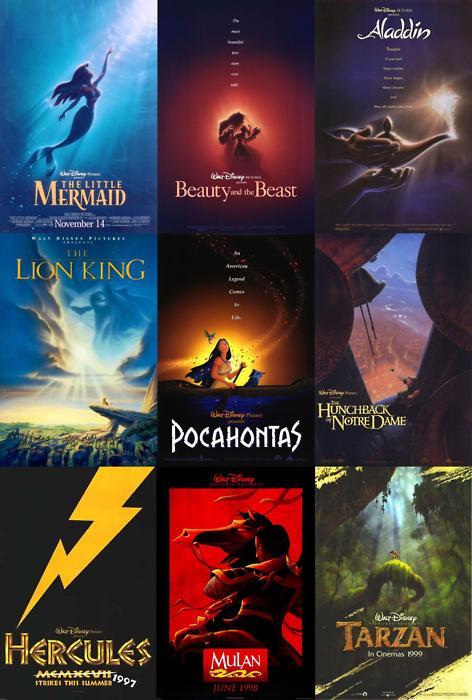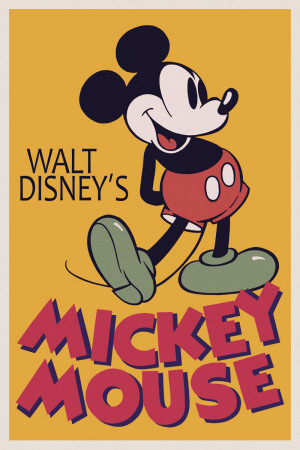Due to its critical and commercial success, The Great Mouse Detective, which tells the tale of a mouse detective, Basil of Baker Street, was actually the movie that convince Disney studios not to scrap their feature length animation division leading to that Renaissance in the first place.
 |
| All this Disney magic because of the success of an anthropomorphic mouse film. |
Because it is an anthropomorphic mouse film, a genre which was surprisingly common in the 1980s and early 1990s with films like The Secret of NIMH, An American Tail and its sequel, An American Tail: Fievel Goes West, as well as The Rescuers and its sequel, The Rescuers Down Under.
Now, that may only be six anthropomorphic mouse films (including The Great Mouse Detective) spread over a decade but that seems to be at least four more anthropomorphic mouse movies than I would have thought necessary to inflict on audiences within 10 years.
 |
| "Why would you do such a thing?" |
Sometimes there would even be two anthropomorphic mouse movies released within six months of each other and essentially compete with each in the box office (or least within the public consciousness since they come out so close to each other) like An American Tail and The Great Mouse Detective. This is also a tradition which has continued more recently with Ratatouille and The Tale of Despereaux in 2007/2008.
Apparently, the film industry believes there is such a great demand for films starring talking mice wearing human clothes that it sometimes decides to push out competing talking mice movies in order to satisfied the insatiable desire to see films with mice in clothes talking.
 |
| Seen as the root cause of the public's unceasing need for anthropomorphic mice in film. |
Now, I actually have nothing against movies staring anthropomorphic mice (The Rescuers was my favourite movie as a young child with some of my first words being "it's stuck tight") but making a movie star talking mice has to have some point rather than simply having talking mice for the sake of having talking mice.
There should be some thematic or narrative reason for having them be mice, like with The Rescuers or The Secret of NIMH where the fact the protagonists are mice is used as a means of emphasizing the odds they face or the danger they face.
This is because there is such a stark contrast between how small and relatively helpless the mice are compared to the epic adventure they find themselves in, where the dramatic tension comes from that contrast and can be used to highlight the theme that you can overcome any obstacle even if you seem small in contrast to the problem.
 |
| The only time when an obstacle could be an owlstacle (I'm so very sorry). |
This is why I think a movie like Cars (aside from being a feature length Hot Rods commercial) just doesn't work as a movie. Like with films with talking mice, there needs to be some point for everyone to be cars, something about the story that needed the narrative device of being set in a world of anthropomorphic cars.
For example, the Toy Story movies use toys as the characters to emphasise the film's themes like fears of abandonment and the desire to want to be considered useful and loved. Making the characters toys makes sense since it's the perfect way to get across the type of story they're trying to tell, it adds an extra element that enhances the narrative.
 |
| Right in the feels. |
But the story in Cars (of a city hot rod being stuck in a small town but growing fond of the small town folk and their rustic ways in lieu of his city lifestyle) could have been told with anything as the characters, although humans make the most sense.
It's a story that has been told a hundred times with always the same narrative beats and outcome [Spoilers: The city hot rod stays in the small town and renounces his city ways]. There's nothing about this type of story which suggests telling it with cars will enhance the narrative in any way.
There is literally no reason for them to be cars aside from making the occasional car pun and while I admit making car puns is very important it shouldn't be at the expense of good storytelling.
 |
| Why are they cars? Why even? Why?! |
With that all out of the way, let's focus on The Great Mouse Detective. Based on rather loosely on the adventures of Sherlock Holmes, Basil actually lives at 221 and 1/2 Baker Street underneath Sherlock Holmes' apartment. Therefore, rather than being Sherlock Holmes as a mouse, he is a mouse who mimics Sherlock Holmes' character and profession (although it's not clear if that is because he purposely copied Sherlock or if it was just the screenwriters trying to be clever).
And actually like Cars, there is very little to no reason that this story needed to be told with anthropomorphic animals/objects. I understand there is a children's book series, Basil of Baker Street, which the movie is based on but it seems like those are just retellings or reimaginings of Sherlock Holmes' tales with mice just because.
They don't often make much use of the juxtaposition between the size of the human world and the mouse world aside from a thrilling climax in the clocktower Big Ben and this is still a detective story with no twists that make it particularly mousy.
 |
| "Ah, yes my dear Dawson. Nothing mousy here at all." |
However, despite all that, The Great Mouse Detective is such an enjoyable and well crafted animated movie with a couple of genuinely funny moments and memorable characters that the fact it stars mice for no real reason doesn't negatively impact the film.
The story is rather straightforward detective story, even if the details of the villains plan seem a little puzzling (he wants a toymaker to create a robot version of the mouse Queen of England so he can have the robot doppelganger declare himself the ruler of all Mousedom which doesn't sound convoluted at all). Simply put, Basil has to find Olivia's father, the toymaker, who has been taken hostage by Professor Ratigan (so he can make the aforementioned robot Queen).
But the plot isn't the real draw here, although it is told well. Rather it is in how dark the movie is (it opens with a brutal abduction and features a number of murders which, although are offscreen, are shown through shadow play onscreen) and in the fierce rivalry between Basil and Ratigan.
 |
| Oh, I know you were expecting a photo of Basil and Ratigan but I forgot to mention how there's a song and dance number with this scantily clad mouse which probably cause a few future-Furries their first confused boner. |
Basil is an interesting protagonist, often egotistical and wrapped up in his own genius, doing the right thing for selfish reasons or without really thinking of others although his heart is in the right place. He's energetic and vibrant. Also, you actually get the sense that he is smart rather than the film just telling you he is, it shows him thinking and deducing, working things out.
But it is Ratigan who steals the show. Voiced by Vincent Price, who gives an absolutely marvellous vocal performance, Ratigan is the dark side of Basil taken to extremes. Completely engulfed by his own ego and bloated meglomania, he is utterly flamboyant and a true villain's villain, willing to kill if his ego is bruised. Price is perfectly cast and is obviously having an absolute blast playing the character.
| "I couldn't be more gloriously evil if I tried, and belive me, I've tried." |
And that is what makes their rivalry so thrilling and enjoyable, the fact the characters are so interesting and perfectly cast. It truly is the centrepiece of the film and elavates it above its cutesy talking mice premise. Basil and Ratigan make such perfect foils that you can really feel the hatred between them but also the joy they take in trying to one up each other.
So, in this one instance, I'm giving a movie a pass for being an anthropomorphic mouse movie when there's no reason whatsoever for having the characters be talking mice who wear late 19th century clothing.
References:
The Great Mouse Detective Wikipedia page
Disney Renaissance Wikipedia page
Vincent Price Wikipedia page
No comments:
Post a Comment